BLOG
The Historicum Scharnstein
20.12.2023 | PORTRAIT
Experience history live in Scharnstein!
Just in time for the start of the Capital of Culture 2024, Scharnstein is presenting its historical delicacies digitally - with XiBIT!
In addition to huge natural backdrops such as the Almsee, which has always been a tourist magnet, or the Kasberg family ski area, the Almtal tourist region also has a lot to offer culturally. Thematic areas include industrial culture, hunting and forestry, nativity scene art, ruin flair, criminal history and castle life.
Stefan Schimpl, deputy Managing director of the Traunsee-Almtal tourism region took on the topic of making the cultural assets in Scharnstein visible and commissioned us to create the infoguide "The Historicum Scharnstein". “We locals obviously know our history, but people who come to visit the Almtal need to have information presented in an accessible and well-prepared way,” says Stefan. And we think so too.
The bilingual digital infoguide consists of four stations in German and English: The Almtal Forest School, the Viechtwanger Nativity Scene, Scharnstein Castle and the Crime and Gendarmerie Museum in Scharnstein Castle. The Scharnstein Ruins and the Geyerhammer Scythe Museum were previously equipped with their own infoguides, which can be accessed via the XiBIT profile page of the Historicum Scharnstein, but here the language English was added. Each station was equipped with an information sign on site, using the XiBIT QR labels to access the digital information. The infoguide is also published on the XiBIT platform and can therefore also be accessed using the search function.
The German audioguide versions were spoken by the object holders themselves in the XiBIT recording studio, and the Native American voice Kelly Wagner lends her voice to the English versions. Many thanks at this point to Kelly, who probably had to do most of the work.
And this is what the main information sign looks like, placed in a central location:
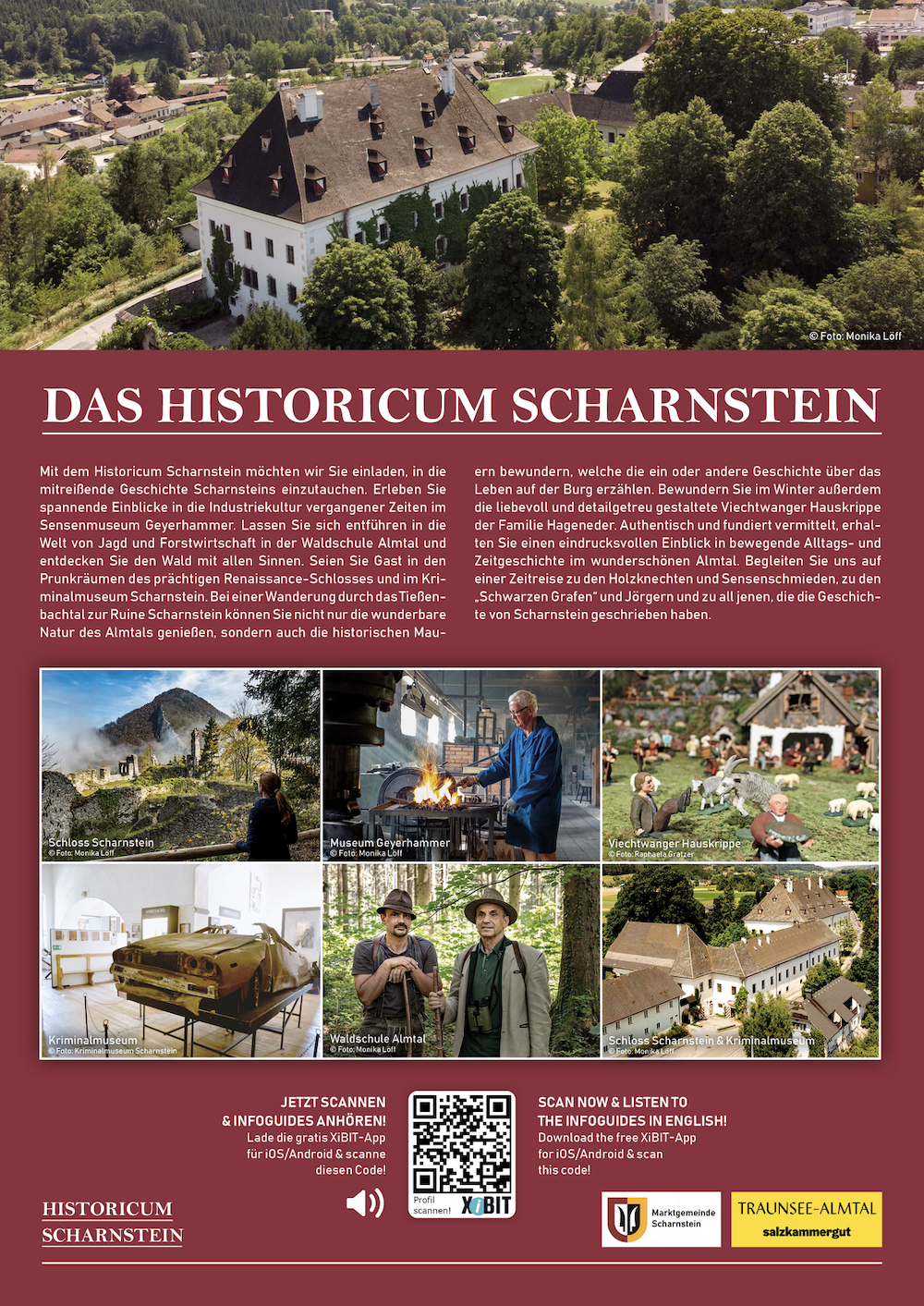
Kelly Wagner in the studio for the English audioguide
With tireless commitment, Kelly spoke the English part of the audio recordings for the infoguide "The Historicum Scharnstein", but also all English translations of the infoguide for the Scharnstein Ruins and the Geyerhammer Scythe Museum. Ugh... and yet, in addition to her American language skills, she always gave us a smile. Thanks for that!
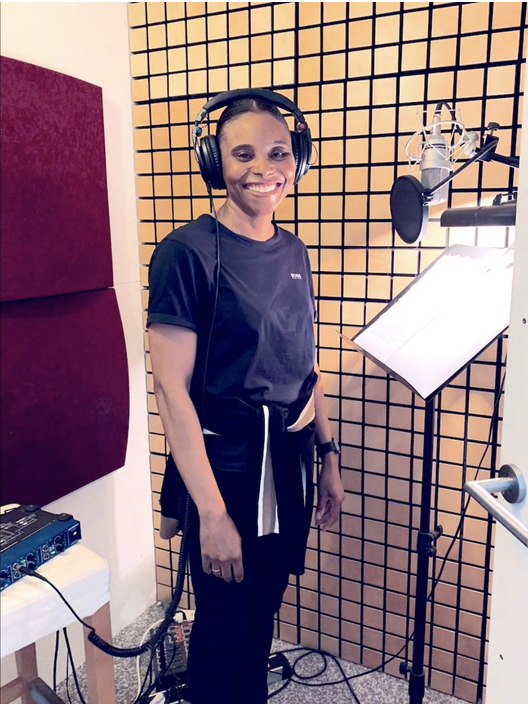
What do you know about the Weir Wall of the Scharnstein Ruins?
17.08.2023 | PORTRAIT
Not much? You don't have to be embarrassed, you can now read or hear it at XiBIT
As a leader project with the aim of promoting the regional development of the Traunstein region in the Upper Austrian Salzkammergut, the themed trail of the Almtaler Bergwiesn association around the protective wall of the Scharnstein Ruins - one of the most popular excursion destinations in the Traunsee-Almtal holiday region - was recently created.
The association, whose purpose it is to work for nature and the preservation of local cultural assets, has now put the idea of making the existing knowledge tangible with a themed trail into practice. The existing texts were revised in cooperation with XiBIT. In order to preserve authenticity, the club's chairman, Franz Mayrhofer, spoke the German audio announcements himself. An American woman living here - a so-called Native American Voice - could be won for the English version of the audio announcements. The atmosphere at the recording date in the XiBIT recording studio was super effective and pleasant, thanks to the actors involved.
The bilingual digital information guide "The Weir Wall of the Scharnstein Ruins" consists of four stations in German and English, which can be visited one after the other in a hike. Each station has been equipped with an information sign whose XiBIT QR labels provide access to the digital information.
You can find out the purpose of the defensive wall, which dates from the time of the second Turkish siege of Vienna, what the so-called loopholes were good for, why the Wagner Chapel was built and what people looked out for at today's cozy vantage point, you can find out in the info guide at XiBIT!
All news at a glance!In our blog area you will find all previously published blog and newsletter articles to read, divided into project portraits and expert tips and archived by year.
"Expedition Bible" - the digital journey through the land and time of the Bible
10.03.2023 | PORTRAIT
the bible exhibition of the bible work linz shines thanks to XiBIT feat. hublz in new digital splendor!
The traveling exhibition "Expedition Bible" by the Bibelwerk Linz invites you to grasp and experience the Bible - the best-selling and most-read book in the world - with all your senses. "Please touch!" is the motto and if you follow the request, there is a lot to do: guessing games on various biblical topics, recognizing oriental spices, feeling the Bible in Braille and antique materials or connecting Jewish terms and objects, and much more.
Here visitors encounter concentrated Bible competence and learn everything about the book of books in an entertaining way. It is worth mentioning that there is a lot to discover especially for younger visitors in the exhibition, specially tailored to the needs of children. As a mobile traveling exhibition, the "Expedition Bible" tours through Austria regularly, but is also on the road in Germany, Switzerland and other countries.
The Bible moves with the timesIn addition to the numerous analog experience possibilities in the exhibition, another application was used for a long time: a digital Bible app, which was specially programmed for the exhibition several years ago and made available to visitors on existing tablets. However, the expenses to maintain and further develop the application were ultimately no longer proportionate and a modern alternative was needed. "One where you can focus more on the content and its quality than on the technology behind it," say Franz Kogler and Reinhard Stiksel from the Bibelwerk Linz, the initiators of the digitization project. Functionality and appearance were no longer up-to-date, maintenance proved to be increasingly difficult. A modern CMS system should solve the problem. And this is how XiBIT came into play.
The challengeAfter an initial discussion, presenting all the playful elements in the exhibition digitally was challenging. No problem with the new hublz feature at XiBIT. As an XiBIT partner, the didactic cultural mediation app hublz from Schörfling am Attersee offers the opportunity to individually design digital scavenger hunts and discovery tours and integrate them into XiBIT. The basic technical requirements were therefore in place and now one could devote oneself to the organization of the numerous contents of the Bible exhibition, which already included audio and video material in addition to the entire text and image material.
New features at XiBITThe implementation was based on the seven three-point boards on site, which lead through the exhibition. Each panel of three is dedicated to a specific topic, which is again divided into 3 topics. Technically, this was implemented with the new parent-child object function. Maintained objects can be assigned to other objects as so-called "group objects", which then appear together as a tab on their object page. This feature provides more clarity and allows you to go more in-depth. All seven three-way panels and the starting point, a roll-up in the entrance area, were each equipped with a QR code.
Another new function could be used to visualize the Israel and Mediterranean maps and the places named on them: the PDF implementation on object pages. By means of iframe integration of two interactive PDF documents uploaded to XiBIT, the two maps could be displayed beautifully and operated in the same way in the iframe window. If you now click on a biblical place on the map, the PDF jumps to the right place in the document thanks to the internal links. In this way, the various events associated with the respective location can be read immediately.
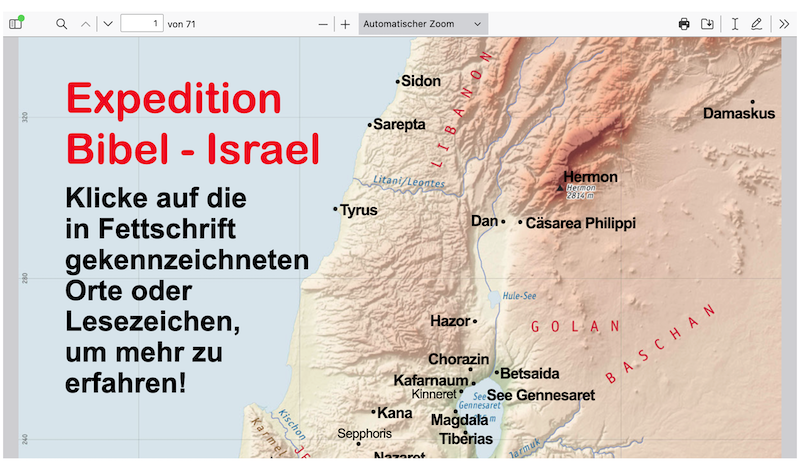
The extensive interactive scavenger hunt in the hublz app for younger and young-at-heart visitors deals with various relevant Christian faith topics in a child-friendly way: From life in the time of Jesus to Judaism and Bible artwork. Using an interactive chatbot and puzzles, the children are guided from one point in the exhibition to another and thus through the entire exhibition, during which specific tasks are to be completed. We also thought about teaching in school classes and created a separate version for external use in preparation for visiting the exhibition.
All in allVisitors now get a very good overview of the Bible, even from home, because the "Expedition Bible" is published on the XiBIT platform and is therefore accessible via the Internet. Contents can now be maintained by the Bibelwerk Linz itself and exchanged if necessary. The team no longer has to worry about technical development. And should the exhibition ever be expanded to include a foreign language, that is not a problem.
XiBIT labels for exhibition marking: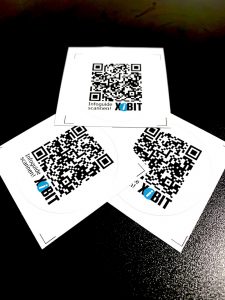
The central seven three-part panels in the Bible exhibition were each covered with a QR label from XiBIT so that the respective information can be called up by scanning. There is also a roll-up in the entrance area of the exhibition that contains the Infoguide QR code that leads to the Infoguide overview of the "Expedition Bible".
Signage for the hublz scavenger hunt: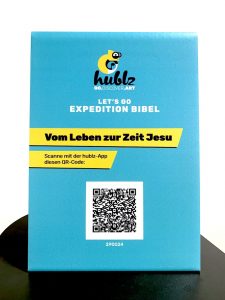
The numerous puzzles in the exhibition were reworked by hublz - the app from Schörfling am Attersee for didactic cultural mediation. The connection between the two applications was established by means of a deep link. XiBIT produced the necessary signage, a total of 6 displays, which represent the stations of the scavenger hunt.
The XiBIT team thanks for the great and valuable project and the good cooperation!Xplore Energy goes into the next round!
27.06.2021 | PORTRAIT
The “adventure trails.climate.energy” of the climate and energy model regions in Austria has been expanded to include a further informative route: Mondseeland proudly shows its hotspots with pioneering position in the climate and energy sector - with XiBIT.
As an alternative and flexible source of information on climate & energy, Xplore Energy is a destination for families, school classes, tourists, groups and people who not only enjoy an original undertaking, but rather appreciate the additional learning value. The individual stations, which can be visited at will, inform visitors about their pioneering position directly where renewable forms of energy are produced, special examples of energy efficiency take place and/or exemplary forms of mobility are developed.
Xplore Energy - a project of the "Klima- und Energiemodellregionen"
In Austria there are 105 climate and energy model regions. The sponsored program of the Climate and Energy Fund Austria consists of united communities with a common goal: to save energy in order to protect the climate. Away from crude oil and gas - instead, clean energy generation from sun, wind, water and bioenergy from the region. They have one thing in common: the role model for other regions. The long-term vision: 100% phasing out of fossil fuels. Each KEM region is headed by a model region manager. Stefanie Mayrhauser organized as such in Mondseeland the participation of 15 stations in the information communication project Xplore Energy. The Mondseeland is thus the fourth region to take part in the project. Each station was equipped with a weatherproof A3 sign and a postcard holder with 100 postcards for free removal for use on site. Interested parties can access the respective page at XiBIT via a QR scan with the XiBIT app on the sign or on the postcard, on which an audio guide is also stored. Of course, the infoguide is also published on the XiBIT website and can therefore also be accessed via the search engine.
Key data of the KEM Mondseeland
The seven communities of the KEM Mondseeland are located in the Upper Austrian Salzkammergut, a scenic and historical cultural area on the northern edge of the Alps. All seven municipalities are members of the REGMO (Association for Regional Development). The Mondsee-Irrsee holiday region also developed through cooperation in regional development. The territory of the municipalities extends over an area of 181.35 km2. The population density is 95/km2.
Was gibt’s zu erleben?
The municipality of Oberhofen am Irrsee provides information about local heating, a local gardener gives an insight into its award-winning energy-saving measures, a gravel mining company shows innovative energetic solutions, an organic dairy farm sustainability in practice. Here you can find out how an elementary school, a camping area, the research institute of the University of Innsbruck or street lighting contribute to climate protection:
Traunkirchen Abbey through the Ages
27.07.2020 | PORTRAIT
Due to the 1000th anniversary of Traunkirchen, the Traunsee-Almtal tourism association publishes the historical career of Traunkirchen via a digital XiBIT infoguide.
Traunkirchen is one of the most beautiful spots in the Salzkammergut, a small antipole to the popular Hallstatt, so to speak, small but powerful, a day trip worth for tourists but also locals, because a boat trip to the other end of Lake Traunsee or an idyllic boat trip, an ice cream at Giovanni, the picturesque scenery and of course the historical monastery Traunkirchen itself invite you to linger. In terms of culture, a visit definitely pays, because with the former Benedictine Abbey, Traunkirchen not only has a long and, above all, strongly feminine religious past, but is also a hotspot for those interested in archeology and a center of ancient customs and traditions in the Salzkammergut.
All three thematic areas currently unite the exhibition rooms in the monastery under one roof: the needlework museum of the golden hooded women, archaeological finds from the Archekult association and the historical development of the Traunkirchen monastery were made tangible. The exhibition and consequently the digital infoguide “Traunkirchen Abbey through the Ages” was prepared with 20 topics related to monastic development. The texts were written by Ms. Drin: B.A. Elisabeth Rumpf and Mag. Reinhard Hofbauer and are available in German and English. The story is transported on site by means of roll-ups. In terms of content, you can look forward to a very precise and detailed presentation. The XiBIT-QR-codes implemented on the RollUps lead to the respective object in the app:
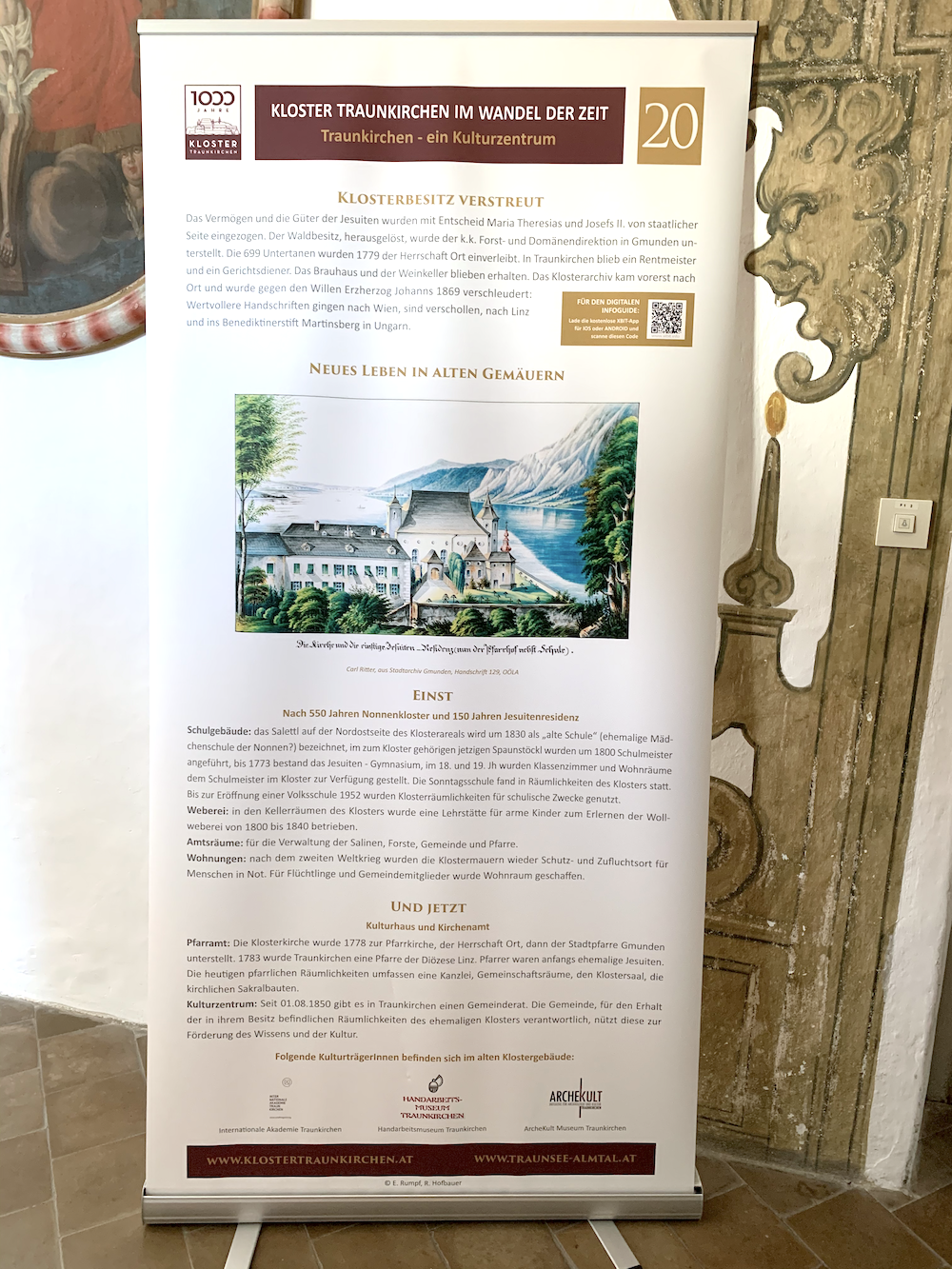
Picture: RollUp in the exhibition area with QR-Code
The exhibition is open from June to September and October from Friday to Sunday and from July to August from Thursday to Sunday from 2 pm to 6 pm. In order to give an insight into the history of Traunkirchen outside of the opening hours, it was decided to publish a short version of the exhibition in the entrance area. The QR code placed on a sign gives visitors access to parts of the exhibition that have been published by XiBIT. Making content visible on the Internet leads to more people locally, and this sustainably strengthens tourism. An advantage of digitization. The lower number of visitors on site due to Corona can thus be counteracted digitally: The exhibition statistics show a total of approx. 5,000 accesses to the digital exhibition objects in the past two months.
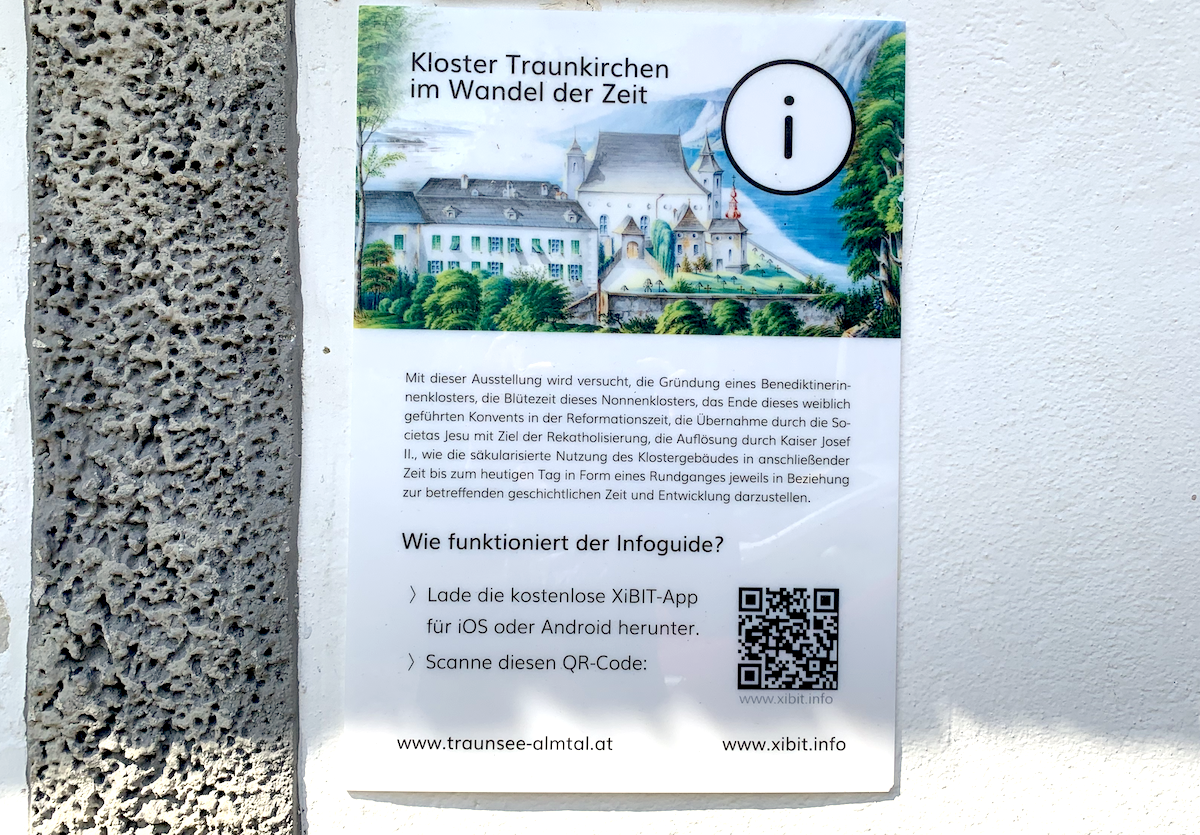
Bild: Sign in the entrance area of Traunkirchen Abbey with QR-Code, which leads to a short version of the digital exhibition content
Unfortunately, the COVID-19 situation, that encountered the team in the midst of the preparations for the exhibition, meant, that the originally planned 1000th anniversary could not take place this year. It remains to hope whether this will be made up at a more suitable time.
If only the old walls could talk ...
15.07.2019 | PORTRAIT
Experience now the history of the castle ruin Scharnstein via Infoguide
Now they can and tell of long gone days, when the ruin was still the center of rule Scharnstein. Only very few excursionists know when they climb the ruin, what took place here centuries ago, which noble families settled here and what led to the castle becoming the abandoned ruin that it is today. The popular excursion destination is often visited by many people from near and far as a manageable route, not least because of the breathtaking views and the historic atmosphere that the ruin offers and thus attracts not only medieval fans.
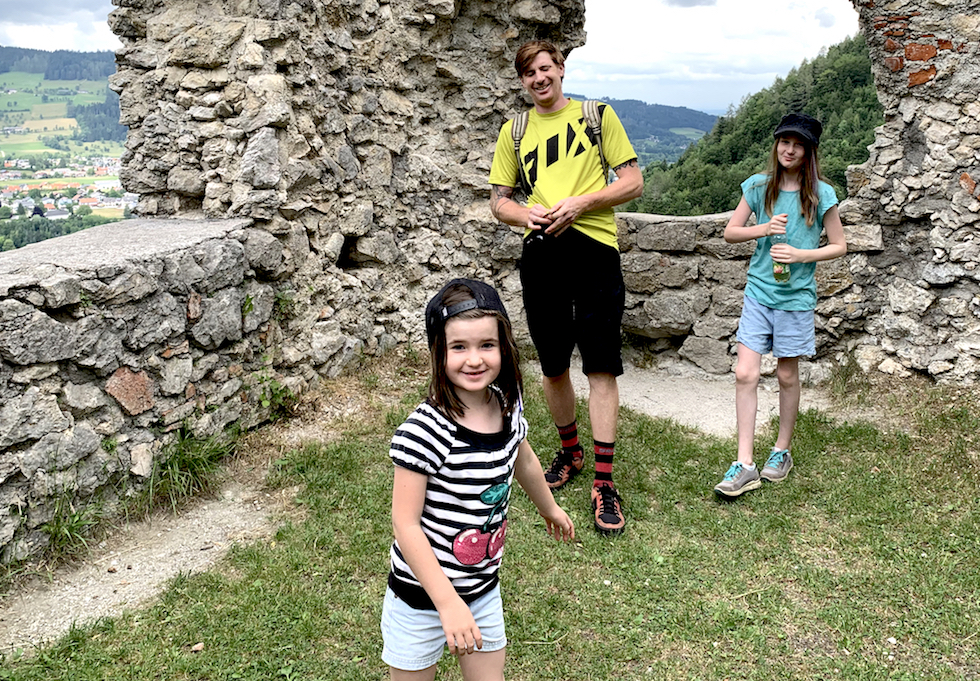 Image: Having fun after a little history lesson and enjoying the medieval ambience - a perfect Sunday excursion!
Image: Having fun after a little history lesson and enjoying the medieval ambience - a perfect Sunday excursion!
Scharnstein and the tourist region Traunsee-Almtal take with the Infoguide for the ruin Scharnstein again another step towards interactive visitor information. If you pack your bag for the day trip in the future, you should consider - even if you're just looking for the outdoor experience - to pack your earplugs to listen to the story behind the ruin on your own smartphone after you've had enough energy before you leave the venue again downwards valley. This stimulates the imagination and thus brings the old walls to life. Otto Clemens, who already lends his voice to the Museum Geyerhammer in Scharnstein, tells about the architecture and about former owners until the castle was abandoned. There is also a legend about the Wagner chapel at the foot of the ruin, that you can listen to via Infoguide. The audio announcements were made with sounds such as wind, which increases the tension and sounds authentic.
„Otto Clemens, who is already lending his voice to the Geyerhammer Museum in Scharnstein, tells the story of the ruin's earlier owners until the castle was demolished. There is also a legend about the Wagner chapel at the foot of the castle ruin you can listen to with XiBIT. The audio announcements were made with sounds such as wind, which increases the tension and sounds authentic.“ Christian Steinhäusler, Chairman Local Committee Scharnstein - Tourist Board Traunsee-Almtal)
After visitors have downloaded the free app, they can access the Infoguide using the QR code located on the two panels at the parking lot in the valley and at the top of the ruin. Furthermore it is possible to find the Infoguide via the search function in the app or on the website www.xibit.info. The community Scharnstein also embedded the infoguide on the community homepage with the code which can be generated automatically in the backend, so that it can also be accessed from here. Since the status was granted "public", the Infoguide can and may also be shared on social media bravely ;-)
The more than 400-year-old history of the Sensenmuseum Geyerhammer comes to live
08.04.2019 | PORTRAIT
The famous and popular TV voice known from various documentaries and cultural formats breathes new life into the museum in Scharnstein.
The Geyerhammer in Scharnstein, a centuries-old institution and historic place in the region Traunsee-Almtal, where the European scythe generation had its peak, is a popular museum in the Salzkammergut and yet abandoned workplace, whose contemporary witnesses care for the tradition of the former events in last generation. Therefore they are confronted with the finite nature of the flow of information and the revival of the cultural site. Members of the “Kultur- und Heimatverein Scharnstein-Viechtwang” regularly open the doors of the Geyerhammer to grant visitors access to the original venue of the largest scythe production facility in Europe, and take turns with the museum tours. So there is always someone who is familiar and gives information with joy that he or she knows either from his own experience or from traditions. However, this also means relying on the availability of certain people, which in the end is not a flexible solution.
„There is a huge interest in preserving and maintaining history, but it can not be assumed that it will be equally present in subsequent generations." Ilse Schachinger, head of the Kultur- und Heimatverein Scharnstein-Viechtwang.
The amalgamation of the tourism associations in Upper Austria and therefore also in the Almtal was not least the impetus to tackle idle projects, thus taking a step in a new direction and using digital potentials.
„If we succeed in communicating our history without gaps, even if no one of “us old people" is around, then that is certainly an advantage!" Joe Mittermaier, Tourism Association Traunsee-Almtal.
XiBIT was chosen because the web-based and functional software met exactly the requirements for a flexible guide solution. The text signs in the museum served as a model for the audio announcements. From these, the most important topics were identified and created as objects and combined into an Infoguide. The audio announcements are partly deposited with background noise, so you feel transported back centuries.
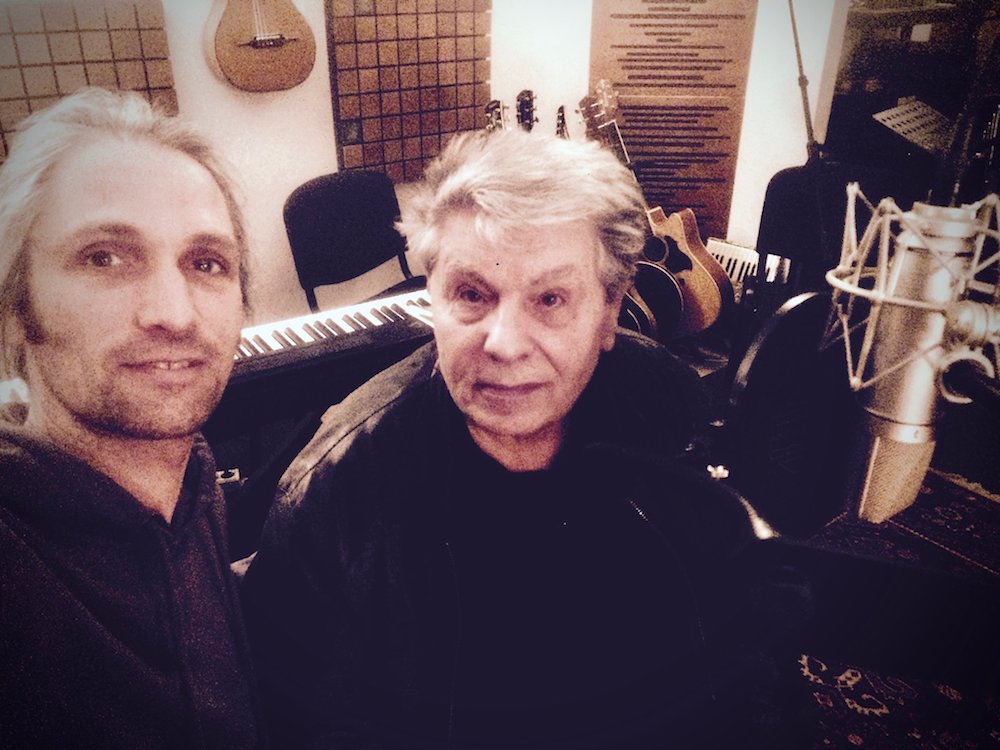
Here you can see audio engineer Robin Gillard (left) and Otto Clemens (right) in the recording studio.
„Die creation of the content is generally the more complex part, but capturing it in the system and configuring the Infoguide is easy." Sandra Daxinger, Project Manager at XiBIT
Visitors can download the free XiBIT app to their smartphone and use it to scan the centrally placed QR code in the museum to gain access to all objects. For those who want to hear the contributions available in the app, the museum offers headphones and loaner devices. In order to gain an impression of the inside of the museum from the outside, a second digital Infoguide was created, which contains only an excerpt from the main Infoguide and is accessible from the outside of the museum. This slimmed down version should whet your appetite for more and animate to visit. In order to make destinations more attractive, places must come alive, even if they are only limited usable like outside the opening hours.
„Otto Clemens' legendary voice automatically raises the level of content mediation to a very high level. Together with the intuitive operation of the Infoguide, it is now a well-round thing." Stefan Schimpl, Deputy Managing Director of the Tourism Association Traunsee-Almtal
The project Geyerhammer serves as a model example in the tourism region Traunsee-Almtal and is intended to encourage further museums to provide their content via Infoguide as well.
Nica Junker - visual artist
25.05.2018 | PORTRAIT
As such, the internationally active visual artist has already traveled to Shanghai, Paris, Jakarta, Tokyo, Marseille and, last month, honored Linz with her exhibition "the beauty of the lingering time".
On the 20th of April in 2018 the 10-day vernissage of the native Saarbrücken artist Nica Junker ended at the "Splace", the gallery of the Art University of Linz. "The beauty of the lingering time" is the title of the exhibition, which illustrates the development process of Nicas PhD work on the topic "for a development of an artistic method of the participative photography for de- and reconstruction of social models for further discussion, visually documented as work in progress. An important and central theme of her work is "spacelessness". Shortly before dismantling I visited the very sympathetic and cordial artist.
For those interested in art, what is shown turns out to be impressive, chronologically photographically documented series of photos of experiences and impressions in which the interplay between the lack of time and space plays the main role. The exhibition deals with the themes of memory and time. Nica visualized a subjective sense of time that resembled a train ride: You sit in the compartment and drive backwards. By looking out of the window, the images of the outside world rush past and mix with the images of the interior. Outside and inside look like a double exposure of a film in the camera. By double exposing sea and snow landscape photographs with industrial areas, Nica was able to create an awesome impression of being out of time. Charmingly written texts accompany the photographs and describe the development processes. The heart of the exhibition, however, is the video installation of the theme in moving image presented with three flatscreens and the projection of the film onto the windows of the Splace, which at night produces remarkable impressions in the outdoor area.
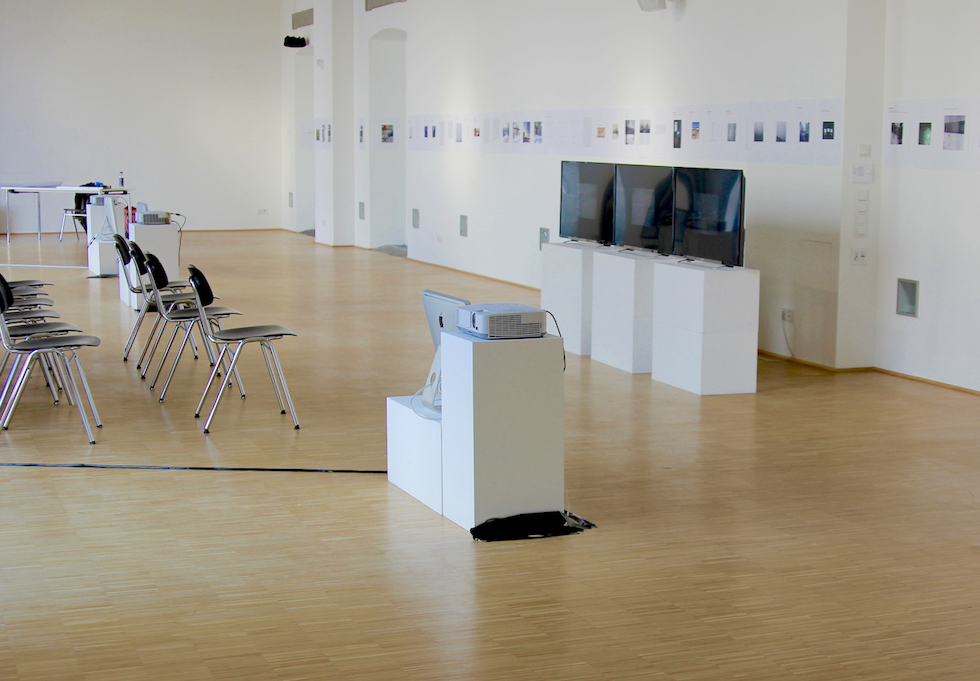
„The relationship of time, space, death, birth and love fascinates me. I explore their limits by dealing with topics such as memory, future, desires, dreams, parallel universes, time shifts and so on“ (Nica Junker, visual artist)
Born in 1975 in St. Ingbert in Saarland, Germany, the film director studied philosophy and comparative literature in Leipzig and at the Sorbonne in Paris. Between 1999 and 2005, she studied directing at the HFF "Konrad Wolf" in Potsdam-Babelsberg before earning her Postgraduate Certificate in Photography at the Central Saint Martin's College of Art and Design in London in 2008. This was followed by some documentary and other films, stays and lectures abroad, such as Japan, France etc. and notable prizes. Since 2014 Nica works on her Ph.D in artistic research at the Art University Linz. The video for "The beauty of the lingering time" can currently also be found in the current issue of the Splace Magazin - the digital magazine of the Kunstuniversität Linz.
The miner band "Bergknappenkapelle Kohlgrube" and coal mining in Wolfsegg
23.02.2018 | PORTRAIT
The exhibition about the mining site in the Wolfsegger Hausruckviertel has become digital and opens up to its visitors regardless of place and time.
In the showroom of the “Berknappenkapelle Kohlgrube” in Wolfsegg/Hausruck for years any legacy of the formative coal era was lovingly assembled by the members of the association and committed hobbyists to make it accessible to the public. The result is an impressive collection of relicts that seamlessly covers the period from the first coal deposits in the 18th century to the factory closure of the “Wolfsegg-Traunthaler Kohlenwerks AG” - the legendary coal mining company founded by Alois Miesbach, Rothschild and Count Julien-Wallsee in 1856. Since, according to the Bohemian model, the music of the mining traditions was part of it from the very beginning, it is important to the musicians to not let this special guild become extinct.
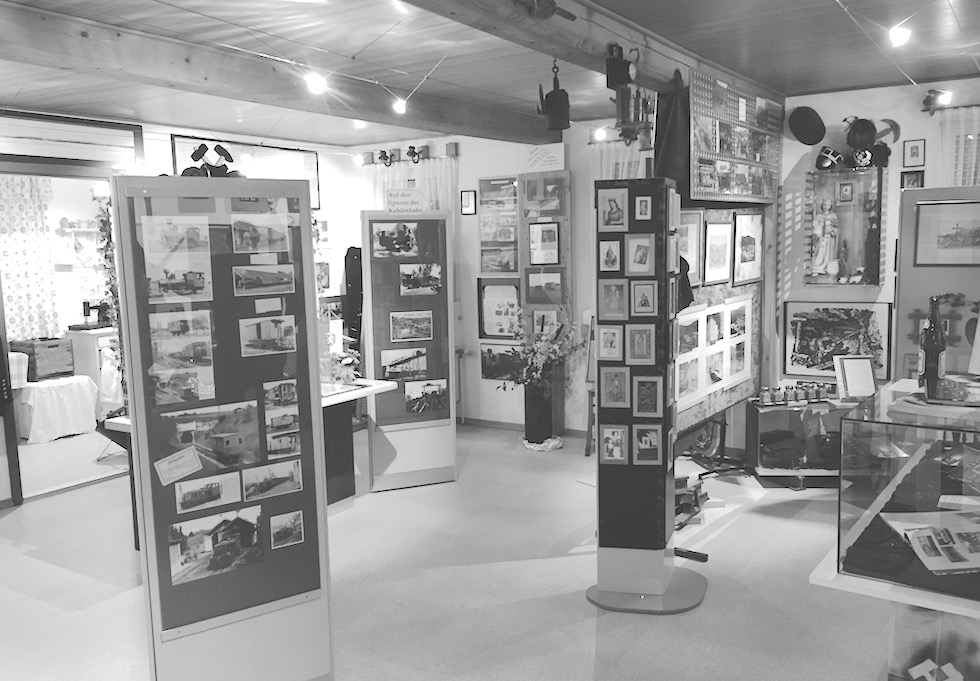
„Our historic village was created just because of coal mining right at this spot. Our ancestors were miners. To keep in mind who we are and where we come from, we want the history of “Kohlgrube” not to be forgotten.“ (Manfred Ecker, Tuba)
The miner band was founded in 1852 by Bohemian miners, who were called into the country by the Wolfsegg reign. It was only a small number of 16 men who turned together to a brass band to play for the newly settled miners of the colony Kohlgrube. Today, the musical association is a cultural bearer in the community of Wolfsegg am Hausruck, which holds on to traditions, cultivates customs and passes on the values to the youth.
In 2006, WTK's operating facilities, which are now used as industrial monuments and venues, were displayed by the Provincial Exhibition of Upper Austria under the motto "Coal and Steam". “This has revived the topic of mining in Wolfsegg and we were able to reach many people.” rejoiced the association members.
„To keep people informed about our history regardless of time and place, we've created a digital infoguide on XiBIT. Since the topic of opening hours is problematic, as is the case with many associations whose members volunteer, the need to find an alternative way of presenting the contents of our showroom to the public is pressing.“ (Adalbert Valenta, 80 Jahre, Zeitzeuge und Schauraumführer)
Adalbert Valenta has witnessed the mining itself, can remember everything as if it had been yesterday, and does mainly the guidance in the showroom on site. Authenticly, in dialect and miner's language, he revives the former times and even gets laypersons into the topic. It was therefore very natural to keep his stories for posterity and to produce infoguide announcements not with a neutral speaker but with himself. "That makes the whole thing really authentic." the proud musicians agree.
The infoguide can be used by visitors on site as an information source on their own smartphone during the exhibition, but also by interested people at home in front of the computer. With the sharing function, it can be shared through social media, reaching many people. For the time being, the guide is unfortunately only in German, an English version will follow.
Good Luck! (“Glück Auf”, miner’s greeting)
Anti-Form
17.11.2017 | PORTRAIT
Format, Not Uniformity
The labeling of a loose fit for Jeans did not act as a model for the design and screenprint-label of St. Georgen by the same name. Nevertheless, the founder, Michael Schumer, is considering that there is a connection in the informality and the will not to bind oneself to limitations of strict patterns. Fittingly, there is an intention to re-invent oneself. Since the agency’s founding in 2010, a collective of like-minded friends has developed from what had intentionally been a T-shirt label. Raffaela Schumer (formerly Malz) joined in 2012 and the creative duo started to handle commissioned artwork under the monicker of ANTI-FORM.
Raffaela is a stylist with heart and soul and also the operator of Vöcklabruck’s hairdressing salon "Salon Frida". There, not only old braids are cut off: the concept of a hairdressing salon and a sales outlet for art and products from ANTI-FORM manifests the crossover and networking aspect.
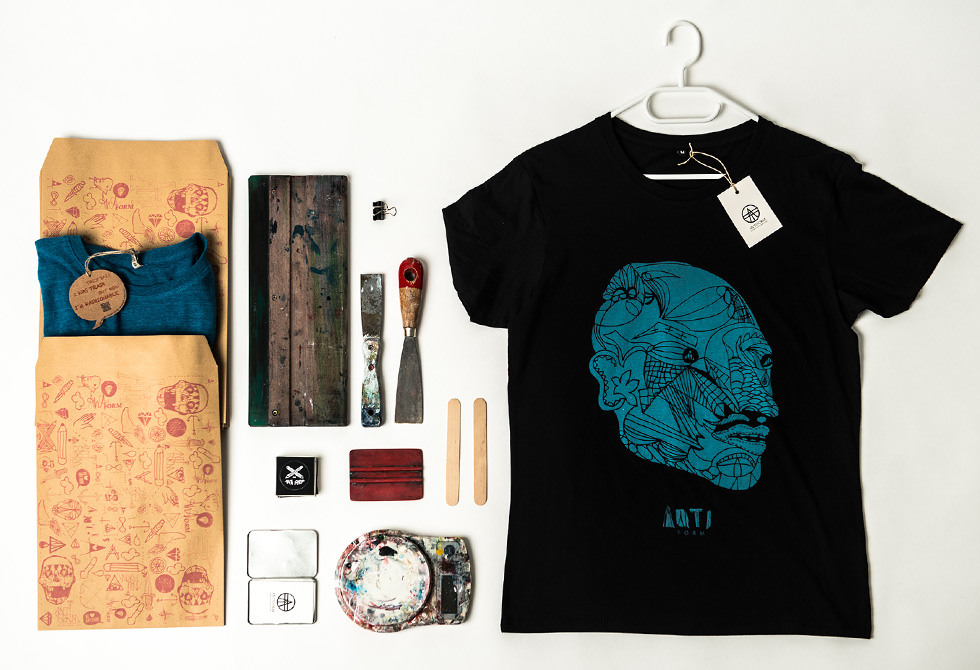
„We love to marry the analogue handcraft with digital styles. That’s the way to create a certain tension and to add character to our art.“ (Michael Schumer, artist and owner of ANTI-FORM)
Over the years, the team has developed a distinct style which you can trace on skateboards, shirts and packagings. Manipulating the analogue handcrafted screenprints via digital processing, there’s a certain tension and the feel of subversiveness with each artwork. „Maybe that’s the result of trial and error. We have experimented a lot and still do“, assumes Michael Schumer.
Regarding experiments, both artists complement each other perfectly. Their artistic adventures lead up to results which display a certain twist in most of all cases. How this spin is coming about depends mainly on the material or medium used. In other words, they are going against the grain. Raffaela and Michael’s way encompasses detailled and figurative stuff as well as intentionally primitive or naive approaches. To dedicate oneself to experimentation it doesn’t need circumstances of chaos, but rather a highly organised timeframe which allows them to cherrish the freedom of expression.
„We sometimes even work in a very autodidactive way and combine whatever we can get a grip on, like paper caollages, groceries, oil crayon, acrylic paint, linocut and beyond. By doing this, various structures come to the fore which again provide basic material for graphics, print or textile design.“ (Raffaela Schumer, co-owner of ANTI-FORM)
Next to artists of the (early) 20th century, like Hundertwasser, Andy Warhol, Frida + Diego, David Bowie, Pattie Smith, Picasso or Kandinsky, Raffaela feels informed by brave contemporary artists, which in the age of Instagram churn out whatever they can in order to share and connect. Standing still is no future option for the people running ANTI-FORM. In 2017 the intensified engagement in moving pictures is already on the agenda. „We do know professionals who can deliver film and animated pictures, but in order to develop skills and a unique style, I think that it is necessary to dive into the matter and experiment,“ says Michael Schumer – and at the end of the day, you’ll have another pair of jeans.
All Blog entries
2023
The Historicum Scharnstein
What do you know about the Weir Wall of the Scharnstein Ruins?
Support XiBIT with donations!
Submission: Digital Transformation
"Expedition Bible" - the digital journey through the land and time of the Bible
The new app update: what's the point?
2022
2021
2020
Multilingual Infoguides
Traunkirchen Abbey through the Ages
Use the next few weeks sensibly & digitize exhibitions
XiBIT Signage Templates
Mark objects and exhibitions with XiBIT labels
2019
How to design exhibitions for children with XiBIT
Optimize your digital visibility: embed an infoguide into other websites
How to create your XiBIT Infoguide
How to use XiBIT to transport content of a museum to the outside
If only the old walls could talk ...
The more than 400-year-old history of the Sensenmuseum Geyerhammer comes to live
2018
Nica Junker - visual artist
The miner band "Bergknappenkapelle Kohlgrube" and coal mining in Wolfsegg
